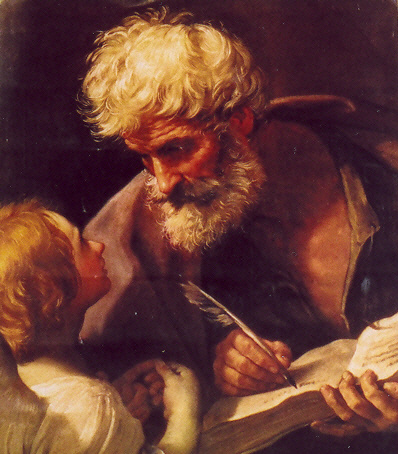
Matthew 2:1-12
Three Wise Men
by Rev. Richard A. Miserendino
Reprinted with permission of "The Arlington Catholic
Herald"
Home Page
To Sunday Gospel Reflections Index
Matthew wrote to show that Christ
was the
Messiah and fulfilled the Jewish prophecies.

When Jesus was born in Bethlehem of Judea, in the days of King Herod, behold, magi from the east arrived in Jerusalem, saying, "Where is the newborn king of the Jews? We saw his star at its raising and have come to do him homage." When King Herod heard this, he was greatly troubled, and all Jerusalem with him. Assembling all the chief priests and the scribes of the people, he inquired of them where the Christ was to be born, They said to him, "In Bethlehem of Judea, for thus it has been written through the prophet: And you, Bethlehem, land of Judah, are by no means least among the rulers of Judah; since from you shall come a ruler, who is to shepherd my people Israel."
Then Herod called the magi secretly and ascertained from them the time of the star's appearance. He sent them to Bethlehem and said, "Go and search diligently for the child. When you have found him, bring me word that I too may go and do him homage." After their audience with the king they set out. And behold, the star that they had seen at its rising preceded them, until it came and stopped over the place where the child was. They were overjoyed at seeing the star, and on entering the house they saw the child with Mary his mother. The prostrated themselves and did him homage. Then they opened their treasures and offered him gifts of gold, frankincense, and myrrh. And having been warned in a dream not to return to Herod, they departed for their country by another way.
Who would have thought that some of the first people to visit Jesus would be scientists? It might seem like a stretch to call those visitors in our Gospel today scientists, but the biblical clues in Matthew 2:1-12 show that they were3 more likely wealthy astronomers than kings. True, astronomy was not quite as complicated or developed as it is today, but the ancient world regularly and meticulously mapped the heavens, and the magi were likely astronomers in that great tradition. The title "magi" confirms this, as it describes someone who spent a good deal of time measuring the stars. Moreover, their reason for their visit confirms it: they studied the stars and knew that something unusual was afoot. Thus, I think it's fair to call them scientists.
Those first astronomers set out on a journey of weeks and miles to find a baby lying in a manger. It was a journey brought about by both faith and reason, religion and science. Because of this, the magi act as a profound symbol for the relationship between science and religion, and specifically between science and our Catholic faith.
Our Catholic faith teaches us that there is no inherent contradiction between faith and reason, and no necessary contradiction between what we believe by faith as Catholic Christians and what we we come to now about the world through science and research. As Catholics, we get to choose "both/and" instead of "either/or." Since both science and faith ultimately pursue the truth, and since truth is ultimately united and perfected in God, they can't possible come to different conclusions in the end.
Our magi also symbolically point the way to how the two can work together. Their journey is both the product of scientific conclusions about their data and an interpretation of that data by their faith. First, they look at the stars and figure out that something unusual is going on. They note it down, and probably came together to confer about it and make sure they had their observations right. Peer review. Yet they were also men of faith. They had a belief that God could use those stars to signal something big: the birth of the king of kings. Since they were open to faith, they were able to interpret their data in a unique and true way, and that led them to take action, beginning a journey.
It works the same way for us: We study our universe through science, and that gives us a clear picture of our world and our place in it. But it's an openness in faith that allows us to grasp the deeper meaning of that scientific picture: to see that scientific data points not just to the world and the way things are, but beyond the world to the loving God who created it. It leads us to see things like stars as more than just burning balls of gas, but as they really are - signs and symbols of God's light and the love of the saints. It takes our observations about space and transforms them into knowledge of the heavens.
The story of the magi reminds us that study of our world and the universe can prepare the way for an encounter with God and lead to a better understanding of his handiwork. When we see the beauty of nature, we see something of the craftsmanship of the divine artist who made it. It invites us to faith. As we continue to ponder the stars and our world with hearts open in faith, we'll continue to be struck by the splendor of the world before us. Our faith and that data will lead us on a journey and like the magi, it will ultimately guide us to meet our savior, Jesus Christ.